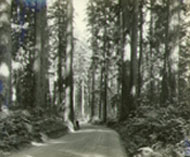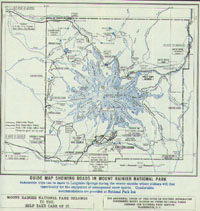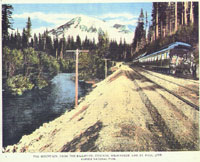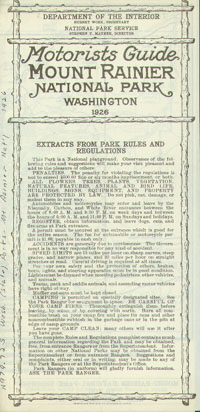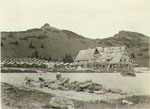Paving the Way to Paradise
|
From the beginning, both administrators and visitors prioritized increasing access to the park via roads. Early visitors to the park came on foot, by rail, and increasingly, by automobile. Park administration and interested developers surveyed roads and speeded access to areas like the Paradise valley. The War Department surveyed and built the road to Paradise, completing work in 1915. Other road construction depended upon funding and when available, the park saw road construction projects throughout its first 30 years. In 1921, for example, the government appropriated enough money to improve the Nisqually Road and start the Carbon River Road. Access from the eastern Cascades began with the White River Road and construction for State Route 410 from 1916 to 1930. |
||
|
|
Accommodations and services have developed over the past 100 years as well. At Longmire's Medical Springs in 1884 and Paradise Park's tent camp in 1896, visitors could find shelter even before the park was established. With the opening of the National Park Inn 1906 and Paradise Inn in 1917, visitors could visit the park with all the comforts of home. Other amenities introduced over the course of the Park's history included trail development, a Paradise ski rope tow, a golf course in the early 1930s, and the Rainier National Park Company's guide service in 1916. |
|
|
Climbing the mountain often means an overnight at Camp Muir at 10,000 feet. "Three buildings huddle at the base of the rubbly Cowlitz Cleaver: the A-frame ranger hut, a plywood dormitory where Rainier Mountaineering clients pass the night, and RMI's stone cook shack, which has a neat Dutch door and was designed by the famous Seattle architect Carl Gould." --Bruce Barcott, The Measure of a Mountain, 1997, p. 138. |
||
